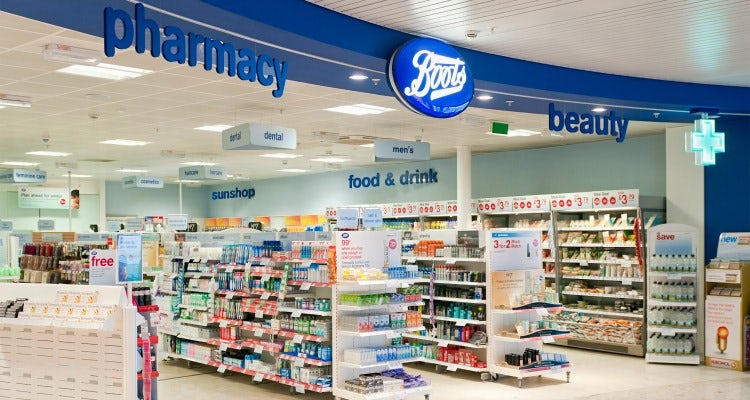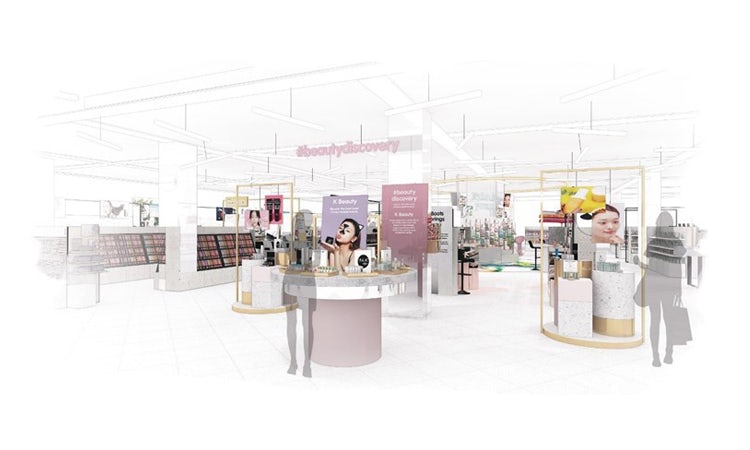Why Boots is getting a makeover: ‘Brand love alone is not enough’
As the 170-year-old retailer ups its efforts to transform the high street beauty experience, Boots’s UK marketing boss explains how she plans to make Boots relevant again.

“Regenerate”, “modernise”, “reinvent”: 170-year-old Boots is on a mission to inject some much-needed spark and relevance back into the brand.
Already this year it has rethought its stores, turning a number of them into Sephora-like beauty halls. It has brought Rihanna’s much-sought-after Fenty Beauty brand, among others, into its growing portfolio. It has digitised its loyalty card and signed a number of sponsorship deals to try and bring its “purpose” to life in new and innovative ways.
“Every brand goes through a period when it needs to regenerate and modernise and that’s absolutely what we’re doing,” Boots UK’s marketing boss, Helen Normoyle, tells Marketing Week.
“Boots is a well-loved brand but love alone isn’t enough. You’ve got to provide people with great reasons to come in and shop day in, day out. What we’re doing now – modernising the brand, making it more contemporary, boosting its relevance – it’s about reconnecting with the love that’s there for the brand.”
Indeed, Boots scores highly on YouGov’s BrandIndex. Out of 50 high street retailers, it is third behind only Marks & Spencer and John Lewis, with an overall score of 36.1.
But while it might be the go-to health and beauty retailer for many shoppers, the rise of online players and social media, alongside changing consumer needs and preferences in terms of how they shop, means Boots has had to “critically reassess” how it can stay relevant.
Boots, which is part of Walgreens Boots Alliance, has just shy of 2,500 stores on Britain’s high streets and claims 90% of the population is within 10 minutes of a Boots store.
However, Boots’s life-for-like sales were down 2.3% at its retail business and 1.5% in pharmacy, although Walgreens claims it managed to “broadly maintain” market share amid wider declines n the category.
In the UK, comparable pharmacy sales decreased 1.5 percent and comparable retail sales decreased 2.3 percent in its second quarter, with Boots UK broadly maintaining market share amid weakness in its categories. Gross profit was also down 8.9% year on year, with Walgreens warning of possible store closures in the UK to try and cut costs.
The slowdown makes Boots’s attempts to ‘reinvent’ the beauty experience and attract a new generation of shoppers even more important, Boots has refitted 24 of its biggest beauty halls this year, replacing traditional beauty counters with trending zones, discovery areas and live demonstrations.

While once it was the norm to go into a store and seek out a trained beauty consultant, now – thanks to beauty vloggers, bloggers and endless make-up tutorial videos online – people are much more informed about what they want.
“Over the past two years in particular the world of beauty has really changed,” Normoyle says.
“That means the type of consultation and engagement they want in store is also changing. We needed to move with the times.”
Another sign of this is Boots’ move to make its 20-year-old Advantage Card loyalty scheme digital – something Normoyle admits, in hindsight, could have been done sooner.
But with the app reaching critical mass [she thinks it has around five million users but is waiting for confirmation] she says this felt like the right time.
“The benefit of [not digitising it sooner] is we’ve got millions of customers out there who are using it so they’ve established that behaviour,” Normoyle explains.
“From the point of view of the customer journey, we’ve almost prepared the ground to make it even more seamless to use the Advantage Card. It was really important we made a great app experience and dropped the [Advantage] card into it so that if you’re new to digital, when you download the app, if you look at all the personalised offers and emails you get it is a great shopping experience now.”
READ MORE: Why is the beauty industry still failing women of colour?
Boots says 17.1 million people are signed up to its loyalty scheme – 1.5 million of which signed up in the last 12 months alone. This is where it sees the biggest opportunities to market to men, something it is looking to do more of in future.
“As we reach ever greater levels of personalisation, we can deliver more tailored personalised communications because obviously a huge proportion of our customers are male as well and it’s about how we reach them,” Normoyle says.
“From an above-the-line campaign perspective, if we think about the customer we speak to it tends to be more female. But if we think about the other channels where we can reach people in different ways, we have the ability to be more segmented with who we’re speaking to.”
Boots launched its summer campaign earlier this month – a “feel good” campaign looking to “celebrate confidence” during a season when body insecurities can often go into overdrive.
It is based on Boots’s purpose to “champion everyone’s right to feel good”, which also forms the foundation for both Boots’s sponsorship of the five women’s football teams in England and Ireland and Women of the Year awards this year.
Boots will also be hosting panel discussions about confidence across the UK as it continues to look at “creative and innovative ways to bring our purpose to life in a contemporary and relevant way.”
“Making sure we nurture, build and maintain the equity we have in the brand is very important to us,” Normoyle concludes. “Being a purpose-led brand is a very important part of who we are.”






